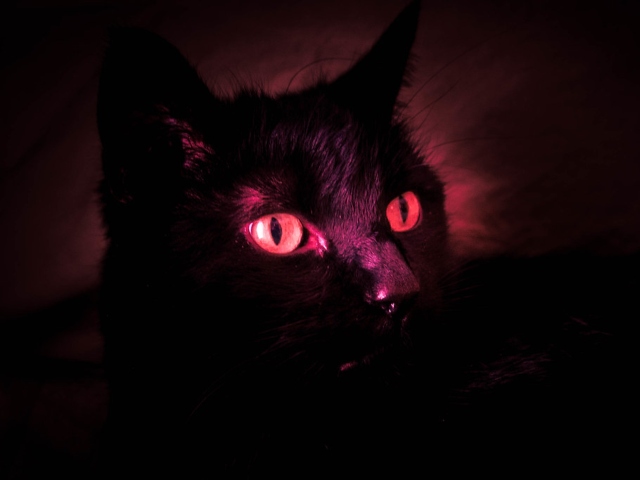
-
New Study Finds Cats Have Ability To Glow In The Dark
06 Oct 2023 by Heinrich in Tech/Sci, World
[imagesource:flickr]
As if cats don’t have enough superpowers already, a new study has found that the furry little felines have the ability to fluoresce, meaning that under ultraviolet light, they can be as bright as a glowstick at a rave.
Many animals have this ability, including birds, reptiles, insects and fish, but until recently not much has been understood about the frequency of fluorescence among mammals. Until now.
In a new study published today by researchers from the Western Australian Museum and Curtin University, fluorescence among mammals was found to be “extremely common.”
Researchers studied 125 mammal species — both preserved and frozen — held in museum collections for the presence of “apparent fluorescence” under UV light, finding “apparent fluorescence” in all mammal specimens investigated to varying degrees.
Joining the glow club along with cats are polar bears, bats, mountain zebra, wombats, dwarf spinner dolphins, leopards and Tasmanian devils. Researchers found fluorescent compounds in the bones, teeth, claws, fur, feathers and skin of these animals with colours ranging from red, yellow, and green, to even pink and blue.
“Species of interest would include those with highly patterned pelts, which may be important for visual signalling or camouflage, and those with highly specialised life-histories.”
“We were quite curious to find out about fluorescence in mammals,” said Kenny Travouillon, curator of Mammalogy at the Western Australian Museum and lead author of the study. “By using the spectrophotometer in the School of Molecular and Life Sciences at Curtin University, we were able to measure the light that was emitted from each specimen when exposed to UV light.”
The research has shown that fluorescence is the result of a chemical on the surface of a mammal, such as protein or carotenoid, that absorbs light before emitting it at “longer and lower-energy wavelengths” which sometimes appear as a pink, green or blue glow.
Even the weird-looking platypus was found to have fluorescent abilities under UV light.
“To date, reports of fluorescence among mammals have been limited to a relatively small number of species,” the study’s authors said. “Here, we are able to reproduce the results of these previous studies and observe apparent fluorescence in additional species: we report fluorescence for 125 mammal species.”
Animals with all-white or lighter-coloured fur were found to be most likely to glow, which represents about 107 out of 125 species, or about 86% of studied species. “There was a large amount of white fluorescence in the white fur of the koala, Tasmanian devil, short-beaked echidna, southern hairy-nosed wombat, quenda, greater bilby, and a cat — and while a zebra’s white hairs glowed its dark hairs did not,” said Travouillon.
Scientists are unsure whether the fluorescent abilities have any particular biological function, or whether it’s simply because of their ‘surface chemistry’.
We can only imagine what the world looks like through the eyes of animals. Unlike us humans, many animals see in ultraviolet, and studies now suggest that cats, dogs and other mammals can as well. In between fluorescing and having military-grade vision, the world outside must be an incredible sight.
[source:abcnews]
Latest News
-
Game, Seth, Match – Goodbye 2024
Hey Guys - thought I’d just give a quick reach-around and say a big thank you to our rea...
-
Breakfast Of Champions: Hollywoodbets Kenilworth Racecourse Breakfast Gallops Is Back!
[imagesource:CapeRacing] For a unique breakfast experience combining the thrill of hors...
-
Need NYE Plans? Cafe Caprice’s Night Of Enchantment Masquerade Party Could Do The Trick
[imagesource:howler] If you're still stumped about what to do to ring in the new year -...
-
Buckingham Palace Steps In After Staff Christmas Party Spirals Out Of Control
[imagesource:maxandeli/facebook] It's not just in corporate that staff parties get a li...
-
Designer Babies Are Running Into Trouble As Teens, Grappling With Being ‘Experiments’
[imagesource:here] Imagine being born with the weight of your parents’ version of per...
-






























